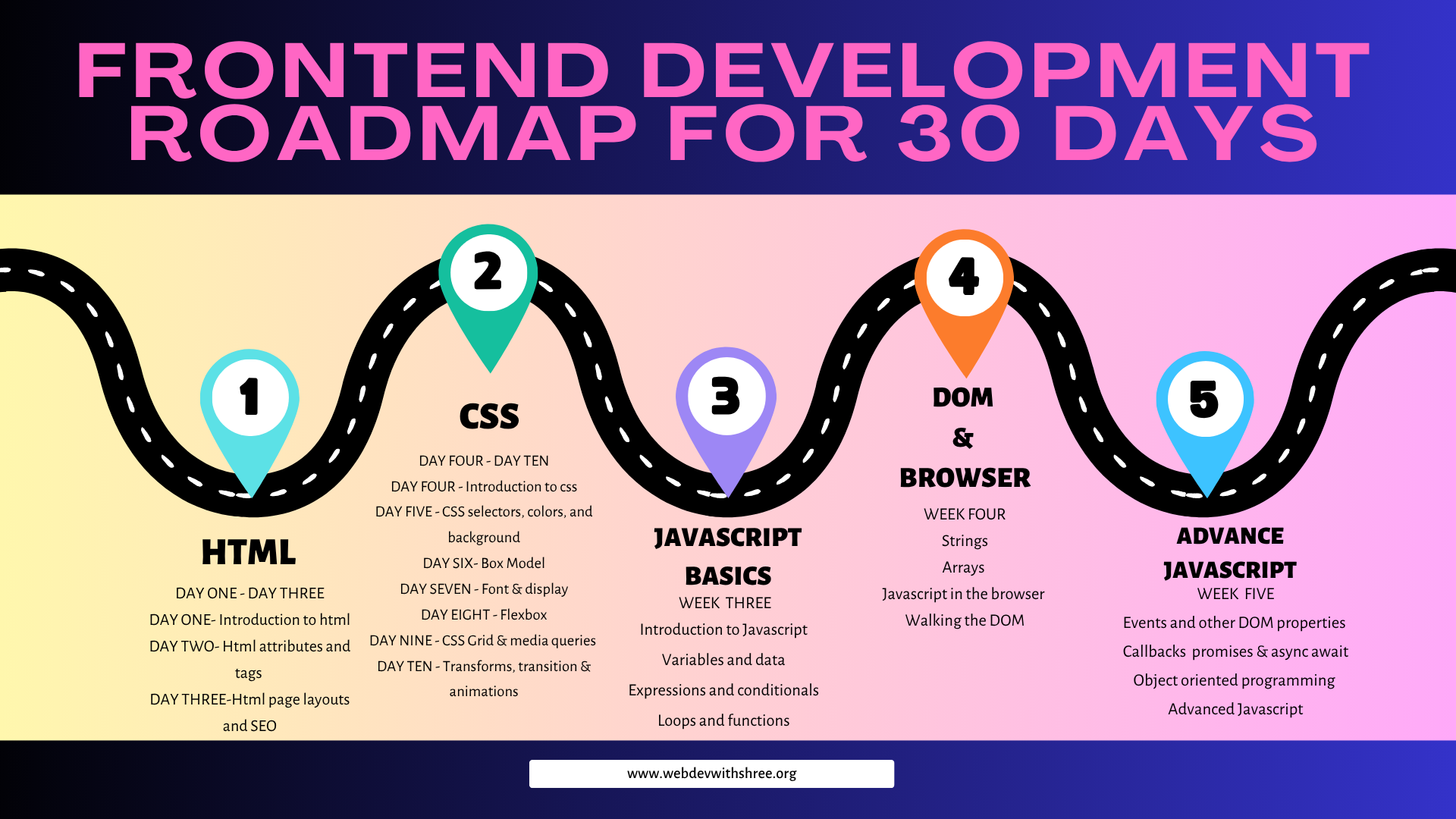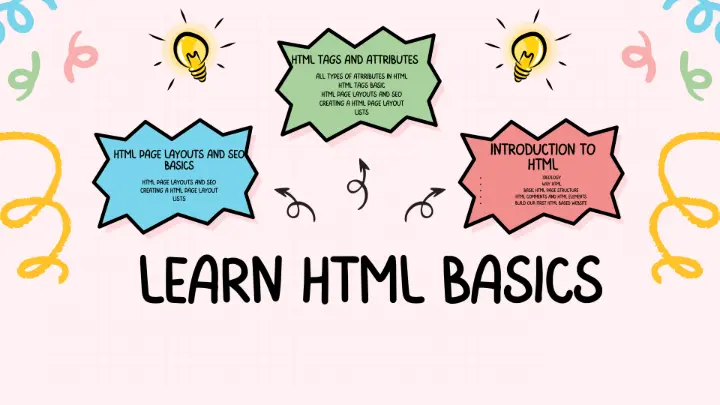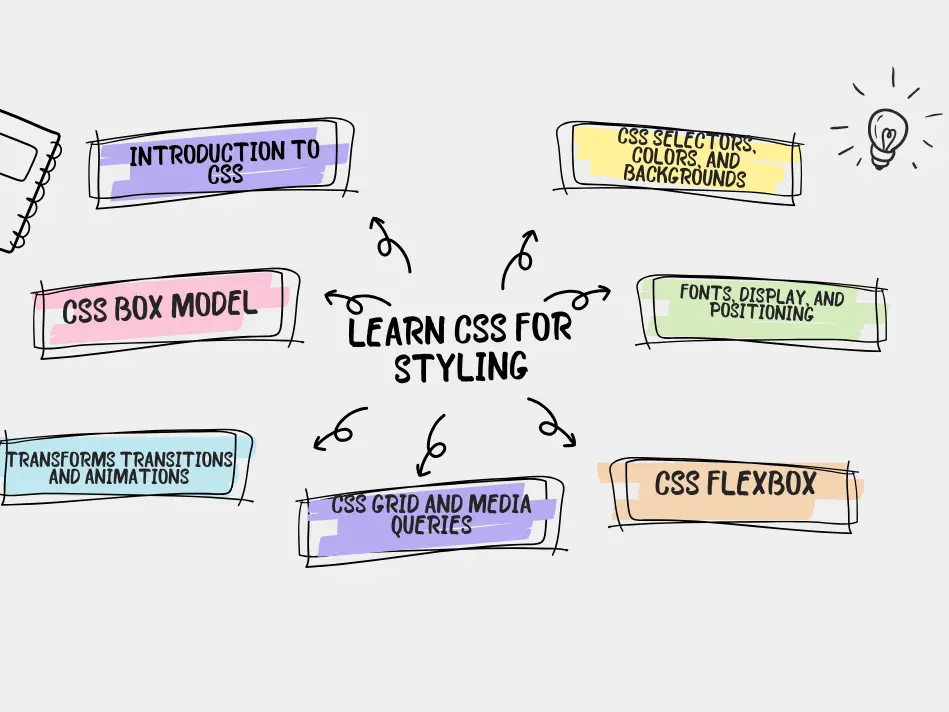Introduction to Frontend Development
Frontend development is all about building the part of a website that users see and interact with. The moment you open a site like Instagram, YouTube, or Amazon, everything that appears on your screen is created by a frontend developer. From the colors and fonts to the buttons, images, navigation bars, and animations, It’s all carefully crafted by frontend developers to make your browsing experience simple, fast, and visually appealing.
Think of a website like a house. The frontend is the exterior and interior that people walk into and interact with — the walls, furniture, lights, doors, and decorations. You might not see the pipes and wiring inside the walls (that’s the backend), but everything that's visible, clickable, and scrollable is the frontend.
Frontend Development Languages
When you visit any modern website, everything you see — from the layout and colors to the menus and interactive elements is made possible through frontend development. At the core of frontend development there are three essential programming languages: HTML, CSS, and JavaScript.
- HTML (HyperText Markup Language) is the foundation. It defines the structure and content of a webpage — like headings, paragraphs, images, and links. Without HTML, there would be nothing to display in your browser.
- CSS (Cascading Style Sheets) handles the presentation. It controls how the content looks — the layout, fonts, colors, spacing, and even animations. CSS transforms plain HTML into a visually appealing and well-organized interface.
- JavaScript adds interactivity. It enables dynamic features — like dropdown menus, sliders, pop-ups, form validation, and real-time content updates. With JavaScript, a webpage becomes more than just static content; it becomes responsive and engaging.
Together, these three languages form the foundation of all modern websites. HTML builds the structure, CSS styles the visual experience, and JavaScript brings it to life with interactivity.
Why Frontend Development is the first step into Web Development
Frontend development is the best starting point in web development because it’s visual, interactive, and gives instant results. You quickly see what you’re building, which makes learning more engaging. It also teaches the core building blocks of the web — structure (HTML), design (CSS), and interactivity (JavaScript). Understanding how users see and interact with websites lays a strong foundation before moving to backend or full-stack development.
Let’s learn frontend development together in one month!
If you're just starting out with web development and feeling a little lost — you're not alone. I'm also a beginner, and I’ve decided to take this 30-day journey to learn the basics of frontend development step by step. And the best part? I’m not doing it alone — you’re learning with me.
This roadmap is not some expert’s advanced guide. It’s a realistic, beginner-friendly plan that I created for myself — and now I’m sharing it with you. Together, we’ll explore the building blocks of the frontend: HTML, CSS, and JavaScript. No pressure, no rush — just simple goals each day, with clear direction and small wins that will keep us motivated.
By following this roadmap, you won’t become a frontend expert in 30 days — and that’s okay. But you will understand the basics, build simple websites, and feel confident enough to keep going. That’s the goal: progress, not perfection.
So, if you're ready to learn together with someone who's figuring it out too — let’s do this, and in 30 days, we’ll look back and see how far we’ve come.
ROADMAP to Learn Frontend Development Basics in Just One Month!

The roadmap image above gives you a clear plan to learn frontend development in 30 days. Now, let’s go through each part step by step, so you know exactly what to learn and how to move forward — starting with the most fundamental skill every web developer needs:
Learn HTML Basics
Day 1: Introduction to HTML
We’ll begin our 30-day journey with the very first building block of the web — HTML. On this day, you’ll explore the core idea behind HTML, understand why it’s essential for creating web pages, and get comfortable with the basic structure of an HTML document. You’ll also learn how to use HTML elements and comments to organize your code clearly. By the end of the day, you'll put this knowledge into practice by creating your very first HTML-based webpage. This is where your frontend foundation truly begins.
Day 2: HTML Tags and Attributes
In Day 2 of the roadmap, you’ll explore the core building blocks of any webpage — HTML tags and attributes. You’ll get a clear idea of how basic tags are used to structure content and how attributes are added to give tags extra meaning and control helping you create richer and more useful webpages.
Day 3: HTML Page Layouts and SEO Basics
On Day 3, you’ll start building full-page layouts using HTML. You’ll learn how to organize content with lists, create tables, and structure forms for user input. Along with that, you’ll be introduced to the basics of SEO — understanding how to make your HTML pages more search-engine friendly from the start.

Learn CSS for Styling
Day 4: Introduction to CSS
On Day 4, you’ll step into the world of styling with CSS. You’ll learn why CSS is essential for designing visually appealing pages, understand its basic syntax, and explore the different ways to apply it. You’ll also get introduced to the HTML DOM, learn how to group and nest selectors, and use pseudo-classes and pseudo-elements to add interactive styling effects.
Day 5: CSS Selectors, Colors, and Backgrounds
On Day 5, you’ll learn how to target HTML elements using different types of CSS selectors. You’ll also explore how to add colors, gradients, and background styles to bring visual depth and personality to your webpages. This is where your designs really start to take shape.
Day 6: CSS Box Model
On Day 6, you’ll dive into the CSS box model — a core concept in web layout. You’ll understand how margins, borders, padding, and content work together to control spacing and structure on the page. Mastering this will give you much better control over how elements are placed and styled.
Day 7: Fonts, Display, and Positioning
On Day 7, you’ll focus on styling text with custom fonts and sizes, controlling how elements appear using the display property, and learning how to position them on the page. You’ll also explore how to style lists for cleaner and more customized layouts. These skills will help you refine the overall look and flow of your webpages.
Day 8: CSS Flexbox
On Day 8, you’ll learn how to create flexible and responsive layouts using CSS Flexbox. You’ll understand how to align, center, and distribute space between elements with ease. Flexbox makes it much simpler to build modern layouts that adapt well to different screen sizes.
Day 9: CSS Grid and Media Queries
On Day 9, you’ll explore CSS Grid — a powerful layout system for creating complex, two-dimensional designs with ease. You’ll also learn the basics of media queries, which allow your layouts to adjust beautifully on different screen sizes. These tools are key for building fully responsive websites.
Day 10: Transforms, Transitions, and Animations
On Day 10, you’ll dive into the fun side of CSS — adding movement and effects. You’ll learn how to transform elements, create smooth transitions, and apply basic animations that bring your designs to life. These skills will make your websites feel more modern and interactive.

Start with JavaScript Fundamentals
Week Three: Introduction to JavaScript
In Week Three, you’ll step into the world of JavaScript — the language that makes websites interactive and dynamic. You’ll begin by understanding what JavaScript is, why it’s essential in web development, and how it works behind the scenes with ECMAScript standards.
Throughout the week, you’ll explore how to declare and use variables, learn about different data types, and start writing basic expressions and conditional logic. You’ll also dive into the power of loops and functions — two key concepts that help you automate tasks and build reusable blocks of code. This week marks the beginning of making your websites truly come alive.
Work with the DOM and Browser
Week Four: JavaScript in Action
In Week Four, you'll take a big step forward by learning how JavaScript interacts with the browser. You'll start with strings and arrays — how to work with text and lists using built-in methods and modern features like template literals.
Next, you'll explore how JavaScript runs inside the browser. You’ll use developer tools, interact with the console, and learn about alert, prompt, and confirm boxes. You’ll also get introduced to the Window Object, BOM (Browser Object Model), and most importantly — the DOM (Document Object Model).
As you move into DOM navigation, you’ll learn how to select elements, move through parent-child relationships, and search or filter elements in powerful ways. By the end of this week, you’ll be confidently manipulating page content with JavaScript — making your sites more dynamic and interactive.
Explore Advanced JavaScript
Week Five: Deepen Your JavaScript Skills
In the final week of the roadmap, you'll dive into more advanced JavaScript concepts that take your coding skills to the next level. You’ll begin by learning how to handle browser events, manipulate the DOM more efficiently, and work with powerful timing functions like (setTimeout) and (setInterval).
Next, you’ll explore how JavaScript handles asynchronous operations using callbacks, promises, and async/await. These tools will help you manage tasks like loading data or responding to user actions smoothly.
You’ll also explore the basics of object-oriented programming and explore useful modern features like destructuring, spread syntax, scope, and hoisting. By the end of this week, you’ll have a strong foundation in both core and modern JavaScript — ready to build real-world, interactive projects.
Final Note
This 30-day roadmap is just the beginning of your frontend development journey. By following it step by step, you’ll build a strong foundation in HTML, CSS, and JavaScript — the core skills every web developer needs.
Remember, learning to code takes time, patience, and practice. Some days might feel challenging, and that’s okay. The important thing is to keep going, stay curious, and enjoy the process.
Whether you’re learning with me or following this roadmap at your own pace — I’m glad you’re here, and I hope this guide helps you take your first confident steps into the world of web development. Your journey has just begun — keep going.
I’d love to hear what you think — did this roadmap help you take a step forward in your learning journey? Was it clear, useful, or maybe even a little inspiring?
Feel free to leave a comment, share your experience, or just drop a hello. Your feedback means a lot and helps me make this space better for all of us. Let’s keep learning, growing, and building — together.